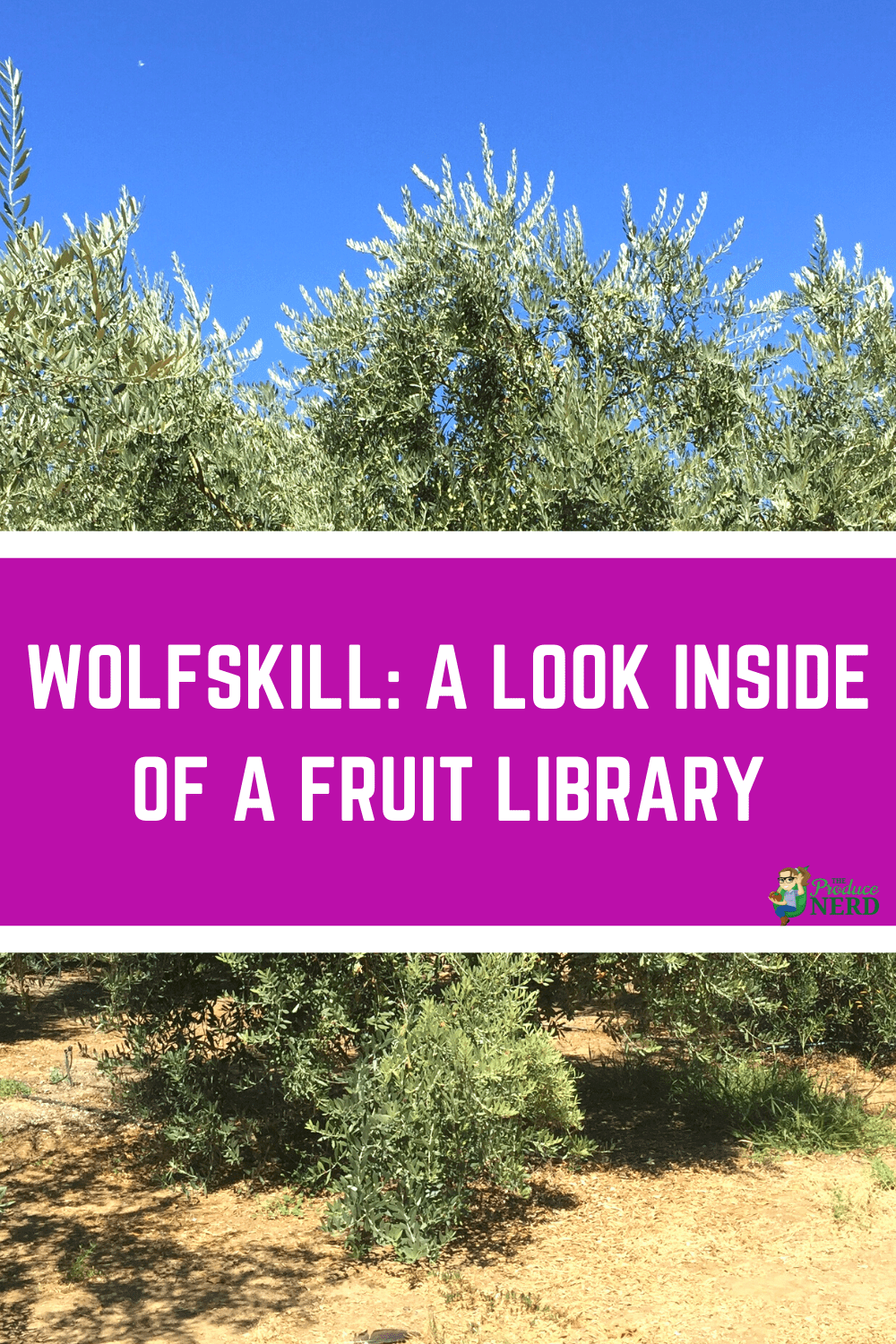Can you imagine having a library of commercial and non-commercial peach, plum, apricot, fig, pistachio, walnut, almond, grape, olive, pomegranate, persimmon, mulberry and kiwifruit at your disposal?! This place, known as Wolfskill Experimental Orchard, located in Winters, California, is just that! As I write this, there are plum and fig trees bursting with ripe fruit. All of the fruit is grown to maintain a library of different fruit cultivars, with two copies each (where possible). The catch is that all of the fruit is going towards research purposes and is not sold in the store.
What is the Purpose of the Wolfskill Experimental Orchards?
The USDA National Clonal Germplasm Repository runs half of the Wolfskill Experimental Orchard (the other half is ran by UC Davis), where their mission is to support public and private scientific research. They collect new varieties, preserve the varieties they have, and perform research to evaluate the different varieties. They have a direct effect on the produce industry as their cuttings are provided for free to science and educators worldwide, who then work directly with the produce industry. Based on the research done, new varieties have been developed and released and are now grown and sold commercially to the consumer.
I have highlighted a few of the collections below, but this in no means, an exhaustive list.
Table of Contents
Grape Collection
To give you an idea of the variety that is located in the collection, there are 59 taxa of grapes that come from 55 different countries, which is the most genetically diverse grape collection in the world. The varieties range from Zinfandel grapes to large, perfect, round grapes preferred by the Japanese market to specific grape clusters that grow better in different climates around the world. The collection maintains varieties that are grown commercially for wine or to be sold as table grapes, as well as other varieties that are not grown commercially.
There are many reasons why a variety that is bred never reaches the store. The reasoning could be based on flavor, shelf-life, skin firmness, disease resistance, etc. Nonetheless, these breeds are maintained so that they do not go extinct, and they could potentially be used for breeding in the future to incorporate their positive traits.
Plum Collection
The plum collection has the greatest diversity. Just taking a walk through the collection during plum season, you can find orange plums, plums that look like blueberries, the plums you are used to seeing in the grocery store, pruning plums that you would not recognize because you are used to seeing them in prune form, and many more. The pictures below are examples of the diversity that can be found in the collection.
Current Research
Current research is focusing on how to incorporate non-cultivated varieties to help prevent against pests, weather conditions, etc. This research includes rootstock research in walnuts, pistachios, olives and almonds.
Potential New Market
Some of the varieties located at the Wolfskill Experimental Orchard are of a donut nectarine (similar to a donut peach), which have not yet reached the market. The current varieties have issues with cracking, blossom end rot (disease), and appearance. With additional funding and breeding projects, there could potentially be a new market for donut nectarines.
Public Fruit Tastings
There are three free public tastings that take place at the Wolfskill Experimental Orchard each year (mulberry/early plums/peaches, fig/grape and pomegranate/persimmon), where they provide different varieties of fruit that are in season for the public to taste. I love going to these because there is abundance of delicious fruit to taste and it is also really enjoyable to watch others get excited about all of the variety and different flavors.
Other Fruit Libraries
This collection includes the fruit that grows well in this region, while the other collections contain fruit that grows well in those areas. For example, citrus can be found at UC Riverside. The other libraries located throughout the United States and the crops located there can be found on the National Plant Germplasm System website.
If you enjoyed this post, you might also like:
